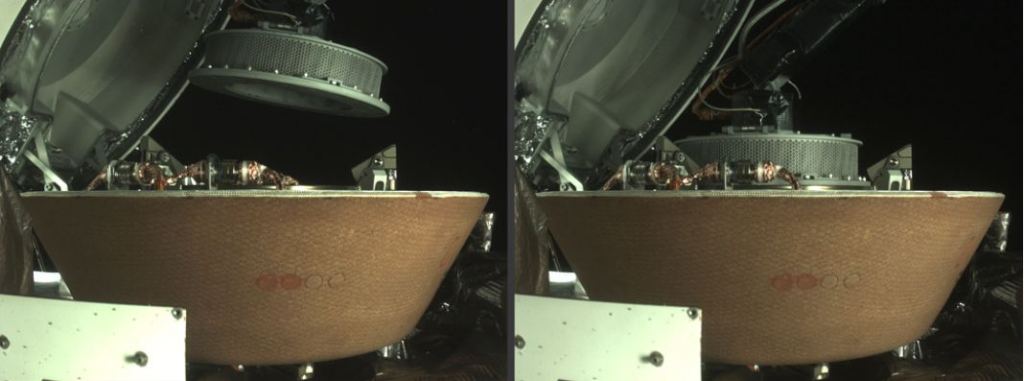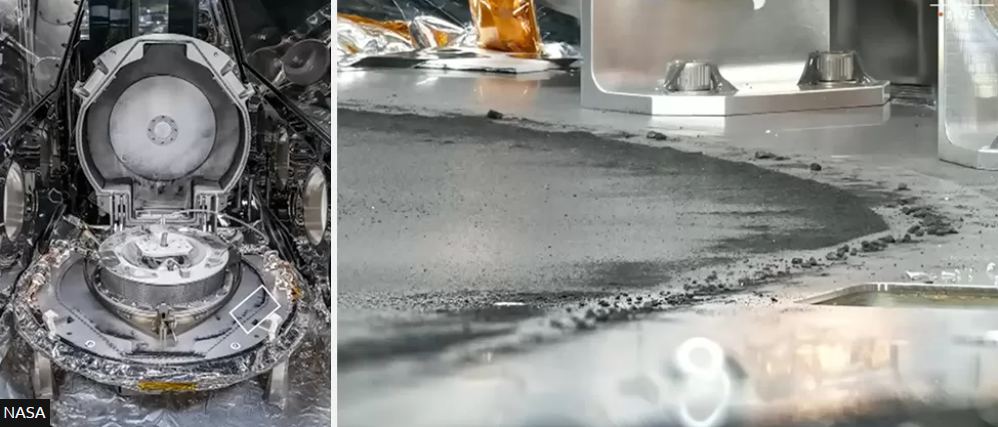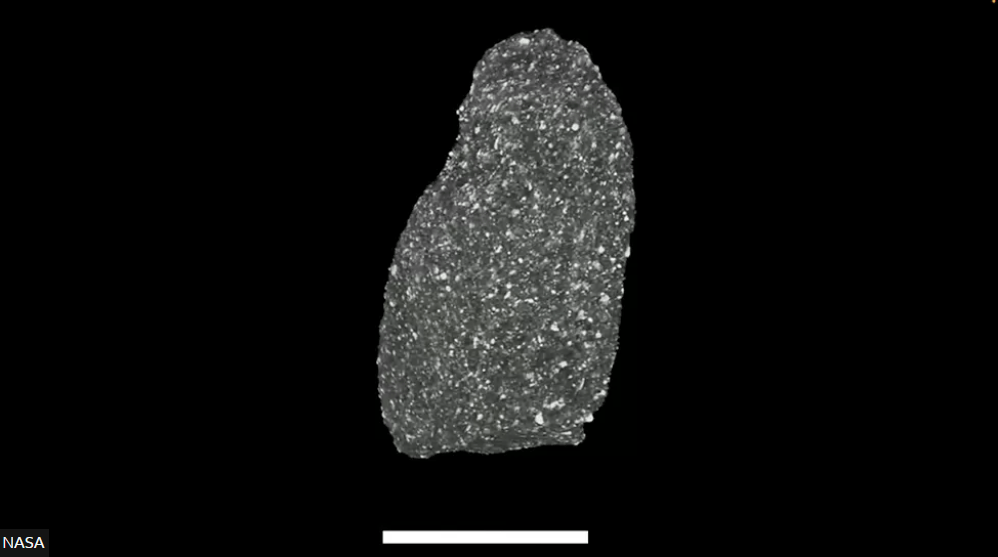Carbon and water are so common on Earth that they're barely worth mentioning. But not if you're a scientist. They know that carbon and water are life-enabling chemicals and are also links to the larger cosmos.
Initial results from OSIRIS-REx's Bennu samples show the presence of both in the asteroid's regolith. Now, eager scientists will begin to piece together how Bennu's carbon, water, and other molecules fit into the puzzle of the Earth, the Sun, and even the entire Solar System and beyond.
These results aren't unexpected. Asteroid 101955 Bennu is a C-type asteroid, and the C stands for carbonaceous. And asteroids are one of the sources of Earth's water, scientists are pretty certain. In fact, we already have evidence that the water in carbonaceous asteroids like Bennu has isotopic levels most similar to Earth's ocean water.
This isn't our first sample from a carbon-rich asteroid. Japan's Hayabusa 2 mission returned a sample of the asteroid 162173 Ryugu three years ago in December 2020. But OSIRIS-REx's (Origins, Spectral Interpretation, Resource Identification, and Security-Regolith Explorer) sample is much larger than Hayabusa 2's. The Japanese mission returned 5.4 grams of material from Ryugu and was a huge success. The Bennu sample will be much larger than that, but NASA isn't certain how large yet. But no matter its size, it holds secrets yet to be revealed.
"As we peer into the ancient secrets preserved within the dust and rocks of asteroid Bennu, we are unlocking a time capsule that offers us profound insights into the origins of our solar system."Dante Lauretta, OSIRIS-REx principal investigator, University of Arizona.
They don't know the sample's size because they haven't opened the main part of the sample return canister yet. After the spacecraft captured its samples with its sampling head, the entire head was placed in the capsule, not just the sample.
When they opened the canister's exterior lid, they found asteroidal material covering the outside of the collector head, canister lid, and base. This extra material had to be processed before they could open the rest of the canister and process the main sample. NASA isn't certain yet, but they think they have about 250 grams (9oz) of material from Bennu in total.
These initial results are from the extra material, which scientists subjected to two weeks of analysis. Collecting excess material like this wasn't part of the plan, but the investigating scientists took it in stride.
"Our labs were ready for whatever Bennu had in store for us," said Vanessa Wyche, director of NASA's Johnson Space Center, where the samples are currently located. "We've had scientists and engineers working side-by-side for years to develop specialized gloveboxes and tools to keep the asteroid material pristine and to curate the samples so researchers now and decades from now can study this precious gift from the cosmos."
The scientists examined the initial sample with several technologies and techniques. They created a 3D computer model of a single particle using tomography. The model highlighted its interior, revealing the presence of carbon-rich material and water. The water isn't liquid, obviously, or ice. It's contained in water-bearing clays.
"As we peer into the ancient secrets preserved within the dust and rocks of asteroid Bennu, we are unlocking a time capsule that offers us profound insights into the origins of our solar system," said Dante Lauretta, OSIRIS-REx principal investigator, University of Arizona, Tucson. "The bounty of carbon-rich material and the abundant presence of water-bearing clay minerals are just the tip of the cosmic iceberg."
That's the type of inspiring language we expect from NASA, and it's all true. But what's the science behind it?
The OSIRIS-REx missions had several goals. The primary goal, obviously, was to collect a sample and return it to Earth. But what was NASA hoping to learn?
Bennu is a primitive carbonaceous asteroid made up of pristine, primordial material. It's a link to the past that holds clues to how Earth formed. Studying Bennu means studying how things are linked.
"We're trying to find out who we are, what we are, where we came from. What is our place in this vastness called the Universe?"Bill Nelson, NASA Administrator
Specifically, the mission was designed to map the asteroid's properties, chemistry, and mineralogical composition. The mission also needed to document and analyze the sampling site to add context to the sample itself. The sampling site was documented down to a scale of mere millimetres, including the texture, morphology, and geochemistry. The mission will also allow scientists to compare the spacecraft's detailed measurements of an asteroid with ground-based observations of the Solar System's asteroid population. This will make ground-based observations more reliable.
OSIRIS-REx also measured the Yarkovsky Effect, a heating/cooling effect on rotating asteroids that changes their path through space. The Yarkovsky Effect can make it difficult to calculate an asteroid's future trajectory and what kind of threat it might pose to Earth.
All laudable goals. Even if it accomplishes nothing more than helping us protect our civilization from a catastrophic asteroid strike, it will be a success.
But the meat of the mission is in what it can tell us about ourselves, the planet we live on, life, and how it all arose. Much of that depends on water.
Scientists think that carbon-rich, water-rich asteroids like Bennu helped build planet Earth. They delivered key components to young Earth that helped it become the water-bearing, life-supporting planet we see today. The water contained in clays like the ones in Bennu gave rise to Earth's oceans, lakes, and rivers. The samples from Bennu will test this idea, either buttressing it or tearing it down.
"We're trying to find out who we are, what we are, where we came from. What is our place in this vastness called the Universe?" said NASA Administrator Bill Nelson during a briefing at the Johnson Space Center, where the dedicated lab is housed.
"These discoveries, made possible through years of dedicated collaboration and cutting-edge science, propel us on a journey to understand not only our celestial neighbourhood but also the potential for life's beginnings," said principal investigator Lauretta. "With each revelation from Bennu, we draw closer to unravelling the mysteries of our cosmic heritage."
OSIRIS-REx's journey of discovery isn't over yet. It's been renamed OSIRIS-APEX as it heads to its next destination, the asteroid Apophis. Apophis was once considered a threat to Earth, but not anymore. It'll still come close, though. The asteroid will make its closest approach to Earth in 2029, so close that people in Africa will have a chance to see it with the naked eye.
OSIRIS-APEX will be watching.
 Universe Today
Universe Today





